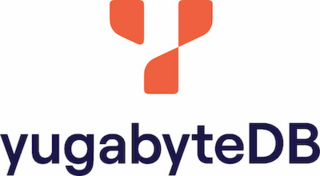Related Research Articles

In computing, a database is an organized collection of data or a type of data store based on the use of a database management system (DBMS), the software that interacts with end users, applications, and the database itself to capture and analyze the data. The DBMS additionally encompasses the core facilities provided to administer the database. The sum total of the database, the DBMS and the associated applications can be referred to as a database system. Often the term "database" is also used loosely to refer to any of the DBMS, the database system or an application associated with the database.

MySQL is an open-source relational database management system (RDBMS). Its name is a combination of "My", the name of co-founder Michael Widenius's daughter My, and "SQL", the acronym for Structured Query Language. A relational database organizes data into one or more data tables in which data may be related to each other; these relations help structure the data. SQL is a language that programmers use to create, modify and extract data from the relational database, as well as control user access to the database. In addition to relational databases and SQL, an RDBMS like MySQL works with an operating system to implement a relational database in a computer's storage system, manages users, allows for network access and facilitates testing database integrity and creation of backups.

PostgreSQL, also known as Postgres, is a free and open-source relational database management system (RDBMS) emphasizing extensibility and SQL compliance. PostgreSQL features transactions with atomicity, consistency, isolation, durability (ACID) properties, automatically updatable views, materialized views, triggers, foreign keys, and stored procedures. It is supported on all major operating systems, including Linux, FreeBSD, OpenBSD, macOS, and Windows, and handles a range of workloads from single machines to data warehouses or web services with many concurrent users.
Structured Query Language (SQL) is a domain-specific language used to manage data, especially in a relational database management system (RDBMS). It is particularly useful in handling structured data, i.e., data incorporating relations among entities and variables.

SQLite is a database engine written in the C programming language. It is not a standalone app; rather, it is a library that software developers embed in their apps. As such, it belongs to the family of embedded databases. It is the most widely deployed database engine, as it is used by several of the top web browsers, operating systems, mobile phones, and other embedded systems.
An XML database is a data persistence software system that allows data to be specified, and sometimes stored, in XML format. This data can be queried, transformed, exported and returned to a calling system. XML databases are a flavor of document-oriented databases which are in turn a category of NoSQL database.
The following tables compare general and technical information for a number of relational database management systems. Please see the individual products' articles for further information. Unless otherwise specified in footnotes, comparisons are based on the stable versions without any add-ons, extensions or external programs.
Multi-master replication is a method of database replication which allows data to be stored by a group of computers, and updated by any member of the group. All members are responsive to client data queries. The multi-master replication system is responsible for propagating the data modifications made by each member to the rest of the group and resolving any conflicts that might arise between concurrent changes made by different members.
A Character Large OBject is part of the SQL:1999 standard data types. It is a collection of character data in a database management system, usually stored in a separate location that is referenced in the table itself. Oracle and IBM Db2 provide a construct explicitly named CLOB, and the majority of other database systems support some form of the concept, often labeled as text, memo or long character fields.
IBM Storage Protect is a data protection platform that gives enterprises a single point of control and administration for backup and recovery. It is the flagship product in the IBM Spectrum Protect family.
A relational database management system uses SQL MERGE statements to INSERT new records or UPDATE existing records depending on whether condition matches. It was officially introduced in the SQL:2003 standard, and expanded in the SQL:2008 standard.
A spatial database is a general-purpose database that has been enhanced to include spatial data that represents objects defined in a geometric space, along with tools for querying and analyzing such data.
SQL/XML or XML-Related Specifications is part 14 of the Structured Query Language (SQL) specification. In addition to the traditional predefined SQL data types like NUMERIC, CHAR, TIMESTAMP, ... it introduces the predefined data type XML together with constructors, several routines, functions, and XML-to-SQL data type mappings to support manipulation and storage of XML in a SQL database.
SQL:1999 was the fourth revision of the SQL database query language. It introduced many new features, many of which required clarifications in the subsequent SQL:2003. In the meanwhile SQL:1999 is deprecated.
A hierarchical query is a type of SQL query that handles hierarchical model data. They are special cases of more general recursive fixpoint queries, which compute transitive closures.
SQL:2011 or ISO/IEC 9075:2011 is the seventh revision of the ISO (1987) and ANSI (1986) standard for the SQL database query language. It was formally adopted in December 2011. The standard consists of 9 parts which are described in detail in SQL. The next version is SQL:2016.
In relational databases a virtual column is a table column whose value(s) is automatically computed using other columns values, or another deterministic expression. Virtual columns are defined of SQL:2003 as Generated Column, and are only implemented by some DBMSs, like MariaDB, SQL Server, Oracle, PostgreSQL, SQLite and Firebird.
The following outline is provided as an overview of and topical guide to MySQL:

YugabyteDB is a high-performance transactional distributed SQL database for cloud-native applications, developed by Yugabyte.